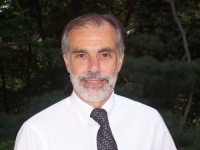 Albert J. Cotugno is the author of Group Interventions for Children with Autism Spectrum Disorders. He is a clinical and educational psychologist with over 30 years of experience. He now works in independent private practice and is an Instructor in Psychology at Harvard Medical School.
Albert J. Cotugno is the author of Group Interventions for Children with Autism Spectrum Disorders. He is a clinical and educational psychologist with over 30 years of experience. He now works in independent private practice and is an Instructor in Psychology at Harvard Medical School.
How did you become interested in autism?
I believe my interest in autism spectrum conditions was first triggered in the early seventies when I was working at a newly opened children’s center at McLean Hospital. We were working in teams and were all struggling to understand and treat hard to manage children with a range of cognitive, social, emotional, and behavioral difficulties. Although I don’t think we were aware of it at the time, many of these children likely suffered from autism spectrum conditions that were not addressed. Gradually, as diagnostic sophistication increased and treatment approaches were addressed and developed more thoroughly, I continued to move further and further into this area, never losing sight of those children I encountered early on.
Why is group work with children with autistic spectrum conditions so important?
Social interaction is a fundamental part of our existence. Effective social interaction allows for satisfying and rewarding ongoing human contact. A significant factor and often referred to as a core deficit in autism spectrum conditions, certainly in Asperger’s Syndrome, relates to social competency and social functioning. Thus to develop and enhance social competency and social skills in children with ASD, the focus must be on social interaction, that is, providing; 1. an opportunity to recognize and understand the nature of social situations; 2. an opportunity for a social interchange; and 3. learning and using the appropriate response for that situation in that interchange.
We believe that learning about and developing social competency and social interactional skills must occur within the naturalistic environment of peers and groups. However, for children on the spectrum, this must be approached in thoughtful, systematic, effective ways with a variety of variables considered and addressed to be successful.
In your opinion, what are the main challenges that children with autistic spectrum conditions face and how can we best help and support them?
I believe that the main challenges for children with autism spectrum conditions at this point relates to awareness. Awareness by the child of their strengths and limitations and how best to address, manage, and balance these in their environment. Awareness by parents, caretakers, and providers of what these conditions are about, be it educational, social, emotional, or behavioral. Finally, awareness by the public, the non-autism spectrum individuals and groups, so as to understand and support these children to enable them to grow to become productive adults.
Who or what most inspires you?
Two things have inspired me continuously throughout my career. First, I am inspired simply by the presence of children, their energy, curiosity, and unpretentiousness as they charge through a world that constantly provides them with new challenges. Second, I am inspired as well by those children, like our children with autism spectrum conditions, who are presented with cognitive, social, or emotional challenges, yet continue to struggle as they seek ways to improve their situations. My task in life is to help make that job a little easier for them.
What are you reading at the moment?
Finishing my book has given me some extra time and I have just completed two wonderful books. The first was Nick Dubin’s Asperger’s Syndrome and Anxiety, a solid and concise book, focusing on a key aspect of autism spectrum conditions from the perspective of one who lives with those challenges every day. The second was Richard Russo’s Bridge of Sighs. Russo is an exceptional storyteller who creates characters that constantly remind us of how our past is inevitably connected with our present and our future. This is a great book about intertwined relationships.
Copyright © Jessica Kingsley Publishers 2009